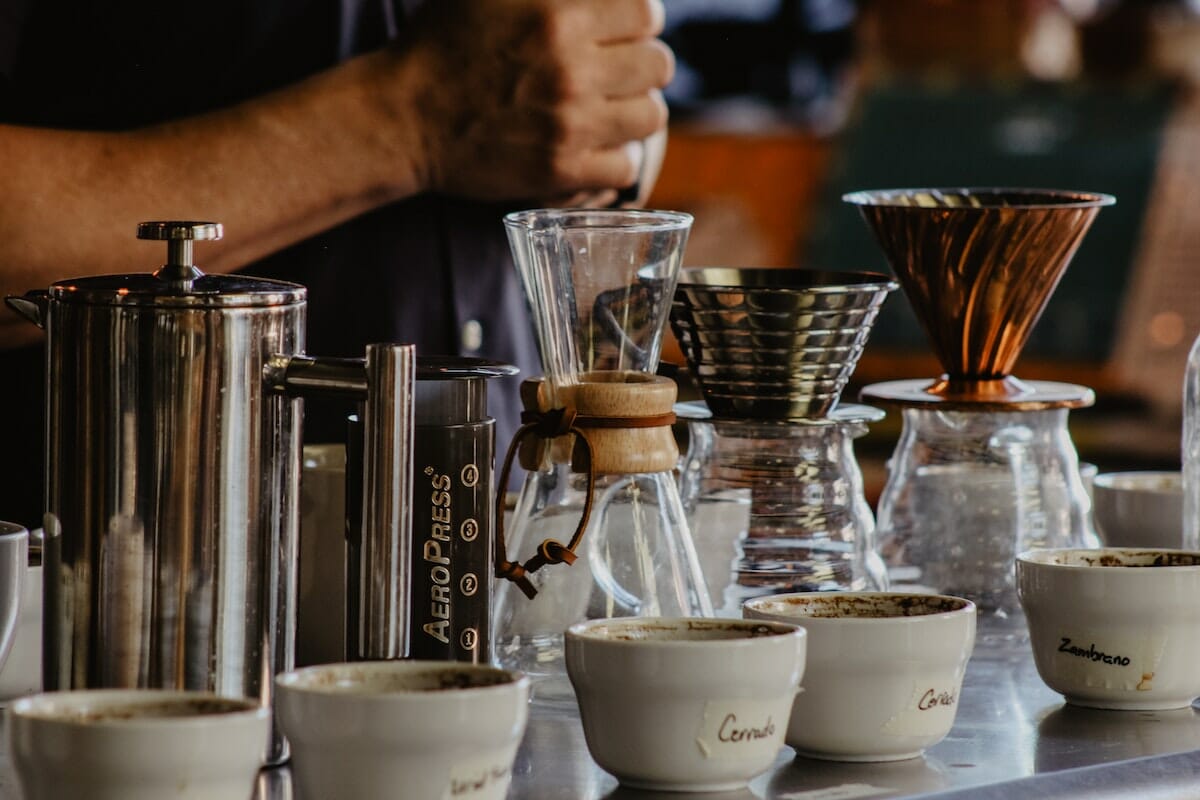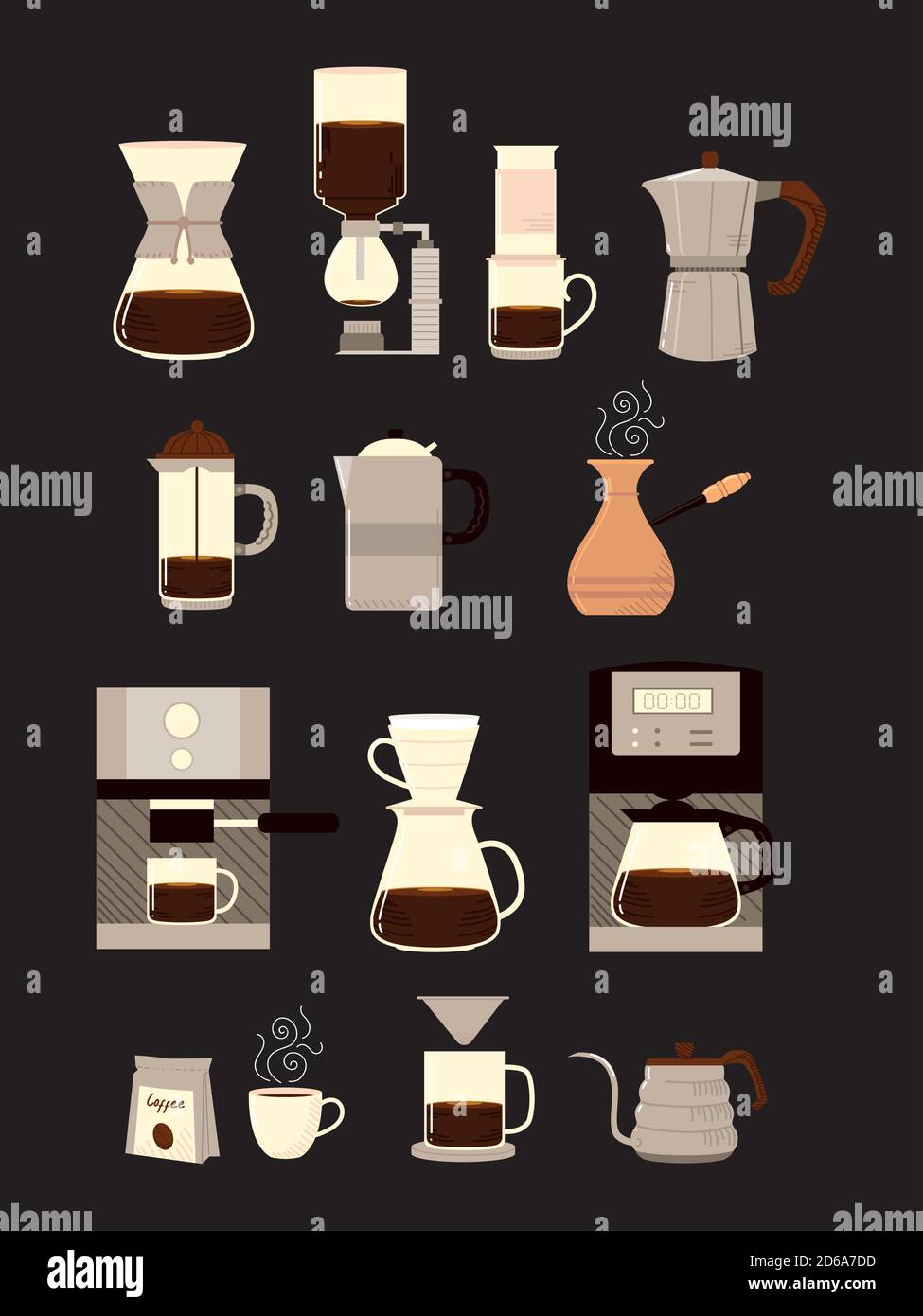Cutting-edge Coffee Brewing Methods to Boost Your Early Morning Habit
Cutting-edge Coffee Brewing Methods to Boost Your Early Morning Habit
Blog Article
The Science Behind Coffee Developing: Exactly How Temperature and Time Affect Your Beverage
Understanding the scientific research behind coffee brewing discloses that temperature and time are not plain variables however crucial aspects that dictate the drink's flavor account and general quality. As we discover the nuances of these components, the concern arises: just how can one efficiently equilibrium temperature and time to accomplish that excellent brew?
The Chemistry of Coffee Extraction
The chemistry of coffee extraction delves right into the detailed procedures that transform raw coffee beans into the fragrant drink appreciated worldwide. This improvement mostly entails the solubility of various substances present in the beans, which are influenced by aspects such as grind size, water top quality, and the developing approach employed.
During the brewing procedure, hot water functions as a solvent, extracting soluble substances, consisting of caffeine, acids, lipids, and sugars, from the coffee grounds. Each substance adds to the flavor account, aroma, and body of the final beverage. For circumstances, acids are in charge of intense and tangy notes, while oils add to an abundant mouthfeel.
The first stages of brewing remove acids and sugars, leading to an enjoyable acidity, while extended removal can lead to anger due to over-extraction of unfavorable substances. Recognizing these chemical interactions is crucial for optimizing brewing methods, as the balance in between extraction time and water temperature level can substantially affect the overall top quality of the coffee.
Perfect Brewing Temperatures
Locating the best developing temperature is crucial for unlocking the full potential of coffee tastes and fragrances - coffee brewing methods. Research study suggests that the optimal variety for brewing coffee lies between 195 ° F to 205 ° F(90 ° C to 96 ° C) Within this variety, the removal procedure successfully liquifies the preferable soluble compounds in coffee beans, causing a balanced and flavorful mug
Developing at lower temperature levels, such as listed below 195 ° F(90 ° C ), might lead to under-extraction, producing a weak and acidic mixture with muted flavors. On the other hand, brewing at temperature levels exceeding 205 ° F(96 ° C) can bring about over-extraction, creating a severe and bitter preference due to the excessive dissolution of unwanted compounds, such as tannins.
Furthermore, the optimal developing temperature level can vary relying on the coffee bean type and roast level. As an example, lighter roasts commonly gain from a little higher temperature levels to improve their intricate taste accounts, while darker roasts may be much better matched to lower temperature levels to alleviate bitterness.
Inevitably, keeping accuracy in developing temperature levels is critical for achieving an unified equilibrium of tastes, ensuring that every mug of coffee provides a gratifying sensory experience.
Impact of Brewing Time
Developing time plays an essential function in establishing the taste profile and overall high quality of coffee. Shorter brewing times can result in under-extraction, leading to a weak or sour flavor, as not enough soluble substances are liquified.
Ideal brewing time differs depending on the approach used and the work size of the coffee. For circumstances, a French press normally calls for regarding four minutes, while coffee removal is normally finished within 25 to 30 secs. It is necessary to adjust brewing time in combination with various other variables, such as water temperature level and coffee-to-water ratio, to attain the desired taste account.
Recognizing the effect of brewing time allows coffee enthusiasts to fine-tune their developing techniques, eventually enhancing the sensory experience of their cup (coffee brewing methods). With careful attention to this variable, one can open the complete potential of the coffee, revealing its distinct qualities and nuances
Brewing Methods and Their Impacts

As an example, approaches like French press and cold mixture enable a much longer steeping time, resulting in a fuller body and robust flavor because of enhanced removal of oils and soluble solids. Conversely, espresso brewing makes use of high pressure and a much shorter extraction time, creating a focused shot that highlights extreme flavors and an abundant crema.
Pour-over methods, such as Chemex or V60, use you can look here a more controlled extraction process, enabling the maker to adjust flow price and water circulation, which can improve illumination and clearness. Percolation techniques cycle water through the coffee grounds numerous times, leading to a stronger, often bitter taste.
Lastly, using paper filters versus metal filters can also affect the last preference; paper filters normally yield a cleaner cup by trapping oils and great particles, while steel filters enable more oils to travel through, adding to a fuller mouthfeel - coffee brewing methods. Comprehending these subtleties can boost the coffee experience significantly
Tips for Improving Your Mixture
A well-executed mixture can change even the easiest coffee right into an impressive experience. Grind the beans simply prior to making to make best use of freshness, making certain the grind dimension matches your developing approach-- coarser for French press and finer for coffee.
Water quality plays an important role; usage filtered water totally free from contaminations. The excellent brewing temperature level varies in between 195 ° F and 205 ° F(90 ° C to 96 ° C ) Also warm can blister the coffee, while too amazing may under-extract tastes.
Timing is equally essential. For immersion techniques, soaking for 3 to 5 mins is optimum, whereas drip techniques normally take about 5 mins. Explore brew times to find your preferred strength.

Conclusion
In recap, the detailed relationship in between temperature and time is extremely important in the coffee brewing process. Recognizing these clinical principles encourages individuals to refine their developing strategies, inevitably leading to a much more satisfying and well balanced coffee experience.
Understanding the science behind coffee developing reveals that temperature and time are not mere variables however pivotal aspects that dictate the drink's flavor profile and overall high quality. Understanding these chemical interactions is vital for optimizing brewing techniques, as the equilibrium in between extraction time and water temperature can significantly influence the general high quality of the coffee.Brewing time plays a critical duty in figuring out the taste profile and overall top quality of coffee. By focusing on these components-- bean top quality, grind size, water temperature Home Page level, steeping time, and ratio-- you can boost your coffee developing procedure, resulting in a navigate to this site constantly exceptional mug.
In summary, the complex partnership between temperature and time is critical in the coffee developing process.
Report this page